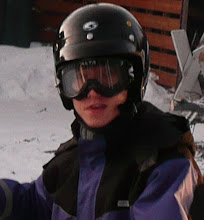I remembered vividly a scenario which changed my perspective towards a welcoming ceremony. This intercultural situation occurred during my visit to a Maori cultural centre in Rotorua, a city in the north island of New Zealand. The Maori are indigenous Polynesian people of New Zealand. After meeting with our guide at the entrance of the cultural centre, we were led into an indoor theatre. All of us sat down hastily as we were eager to watch the welcome performance on the stage. Soon, twelve traditionally dressed Maori tribesmen marched into the stage. After arranging their positions on the stage, these half-naked men started shouting at the top of their voices furiously. In coordination to their ear-splitting roars, they performed precise hand actions, like slapping of their chest and thigh. Furthermore, these fierce-looking performers had scary face tattoos and were staring at us throughout the performance. All these elements of the welcome performance made me felt uneasy and nervous.
After the performance, one of the performers explained to us about the importance of the customary display. I learned that the performance that was put up was actually a Maori war dance called “Hakka”. This dance was originally performed by Maori warriors before a battle. Its purpose was to proclaim strength and prowess of the warriors so as to intimidate the opposition. Nowadays, the Haka constitutes an integral part of welcome ceremonies for distinguished visitors. This experience was totally different from any form of welcome ceremony that I had participated in or read about. Before attending this event, I always had an impression that performances put up during welcome ceremonies would be light-hearted and entertaining. Through this overseas experience, I realized that I should learn to be more receptive to different cultural traditions.
My Final Reflection
16 years ago

Hey Terry,
ReplyDeleteI saw the same "Hakka" dance when the New Zealand team, All Blacks play rugby. It a symbol of their superiority and is intended to scare the other team.
It is a very fine post overall.
Thanks for sharing this experience, Terry. I can understand your surprise at the roar and slapping of the Hakka. However, isn't such a performance very much just a display for tourists nowadays? What I mean is, no one would be doing this in their living room while welcoming guests, right?
ReplyDeleteYou were just a member of the audience in that case. You could have just as easily been watching a sporting match that you didn't quite relate to. Of course, the Hakka tradition will seem odd to those of us who are not Maori, but I'm not sure if I see this example as you having to adapt to a norm that you are not used to. Do you see what I mean?
Dear Brad,
ReplyDeleteI am actually trying to express my shock feeling when i first watch the Hakka 10 years ago. I have to say that i am quite ignorant of the Maori culture before embarking on that trip. However, after that performance, i found out that the dance was really a national culture and identity. (New Zealand National rugby team would always perform this ritual dance before any international game!) Thus, we actually performed the Hakka dance as part of a compulsory cultural show item when we returned back to singapore. I do feel embarrassed at first because i need to shout strange maori words and do all the actions of the dance in front of all my secondary school mates. However, i do feel a sense of unity and fervor during the performance.
The point that i want to express is that there are many cultural traditions that i may not be able to appreciate at first encounter. Through research and probably experiencing it myself, i will probably able know the meaning and importance of it.
The whole post was entertaining. I must go for such a performance when I managed to go to New Zealand.
ReplyDeleteI believe this lesson is relevant to Singaporeans and youths in general. Many of us have been too "cocooned" during our childhood. There is a need to recognise that there is a great diverse world out there and not just tiny Singapore.
This can be summarised in 3 words. Live and Learn!
Thank you annie for your comment. I agree with on the point that there is really a great diversity of cultures and traditions out there for all of us to explore. I feel that the youths today are more fortunate that they can access the internet easily to find information of the places that they are visiting. I need to confess that i did not have this privillege prior to this trip. Thanks again for identifying what i want to express in this blog post.
ReplyDeleteThanks, Terry. Your explanation clarified things for me.
ReplyDeleteThanks Terry, for sharing this with us, I learnt something new from your post! So interesting and unique and like what you have mentioned, I would have also expect the welcome ceremony to be more of entertaining and pleasantly accepted by most. However, we just need to be open to others' culture and practices. In this case, though we may find it uncomfortable watching, but in their context, it may be their way of showing great respect to the distinguished guests. Afterall, having the opportunity to be presented with such rich-in-culture performance is (I would consider) a privilege.
ReplyDelete